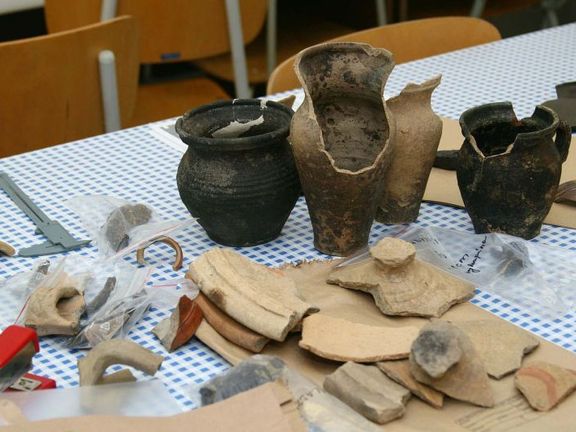Plzeň - Thanks to a unique joint undertaking by archeologists from the University of Pilsen, the capital of West Bohemia, and their colleagues from Great Britain and the Netherlands, traces of ancient past of the Czech lands may soon be fished out from deep underwater.
It is in the mud of the South Bohemian fishponds, where the experts will search for traces of ancient settlement from the period ten thousand years ago.
Where there are ponds now, there once used to be lakes, whose shores were inhabited by people - the ancient settlers.
The team of international archaeologists has high expectations of their research in the Švarcenberk pond nearby Veselí nad Lužnicí, in South Bohemia.
"Initially, it was a lake, with documented continuous settlement from the Old Stone Age, between 10,000 and 5,000 B.C.," explains Pavel Vařeka, head of department of research projects.
"It is the only known site in Central Europe from this period with preserved wooden finds. We want to fund its exploration through a grant from the European Union," adds Vařeka.

During such a long time of settlement, the surroundings of the lake have changed significantly, from open landscape to thick forest.
Water preserved artifacts
"On the shores of the lake, there used to be hunter stations, whose remains are now hidden under water. That´s why not only the commonly known stone tools have been preserved, but also some unique wooden artifacts. These must be conserved, which involves removing water from them without deforming the object," adds Pavel Vařeka.
Pilsen´s scientists are to get help from specialists from England and Holland. The reason is, in the Czech Republic, there is nobody to study wet sites, where organic substances such as wood or leather, decomposing in normal soil conditions, can be preserved.
It was presumed, there were no such sites.
If the new equipment isn´t satisfactory, then they will receive some help from the second largest archaeological department in England, Department of Archaeology at the University of Sheffield, that Pilsen archaeologists collaborate with.
For example, the dendrochronological dating based on the analysis of tree-ring growth patterns enables to determine from the bigger wooden artifacts, when the tree was cut down, with one year accuracy. Similarly, in Pilsen, there is still no facility for dating the finds using the radiocarbon method.
Experts from Holland ready to help
They will be exploring in the shallow waters near the shore. The finds will be under water, although not in the middle of the pond. Water has always been here, only its borders have changed slightly, so no divers will probably be necessary.
Archaeologists will predominantly use a method, when they suck up the water from the studied site with a pump. They will dig a hole on the edge of water and land.
"If we come across something special, the Dutchmen have a method how to extract the whole block of soil and transport it in one piece to a laboratory, where we can examine it thoroughly without being disturbed," říká Vařeka.
"In January, there was already a colleague from abroad and we agreed on simultaneous investigation of the sites on land as well, which are also interesting.
We have to determine how far the settlement on the shore is from the finds. For May, we already plan our first meeting outdoors," he added.








